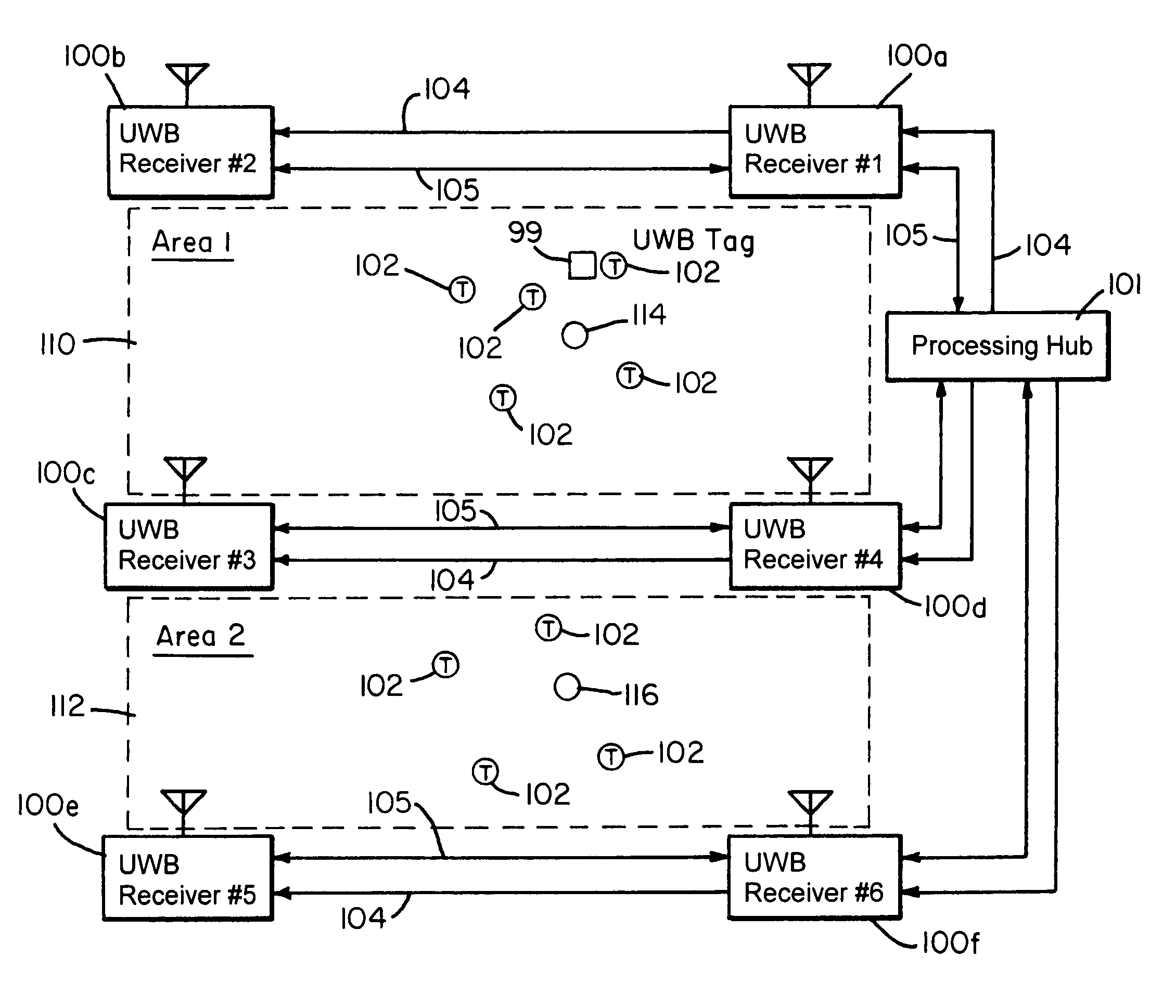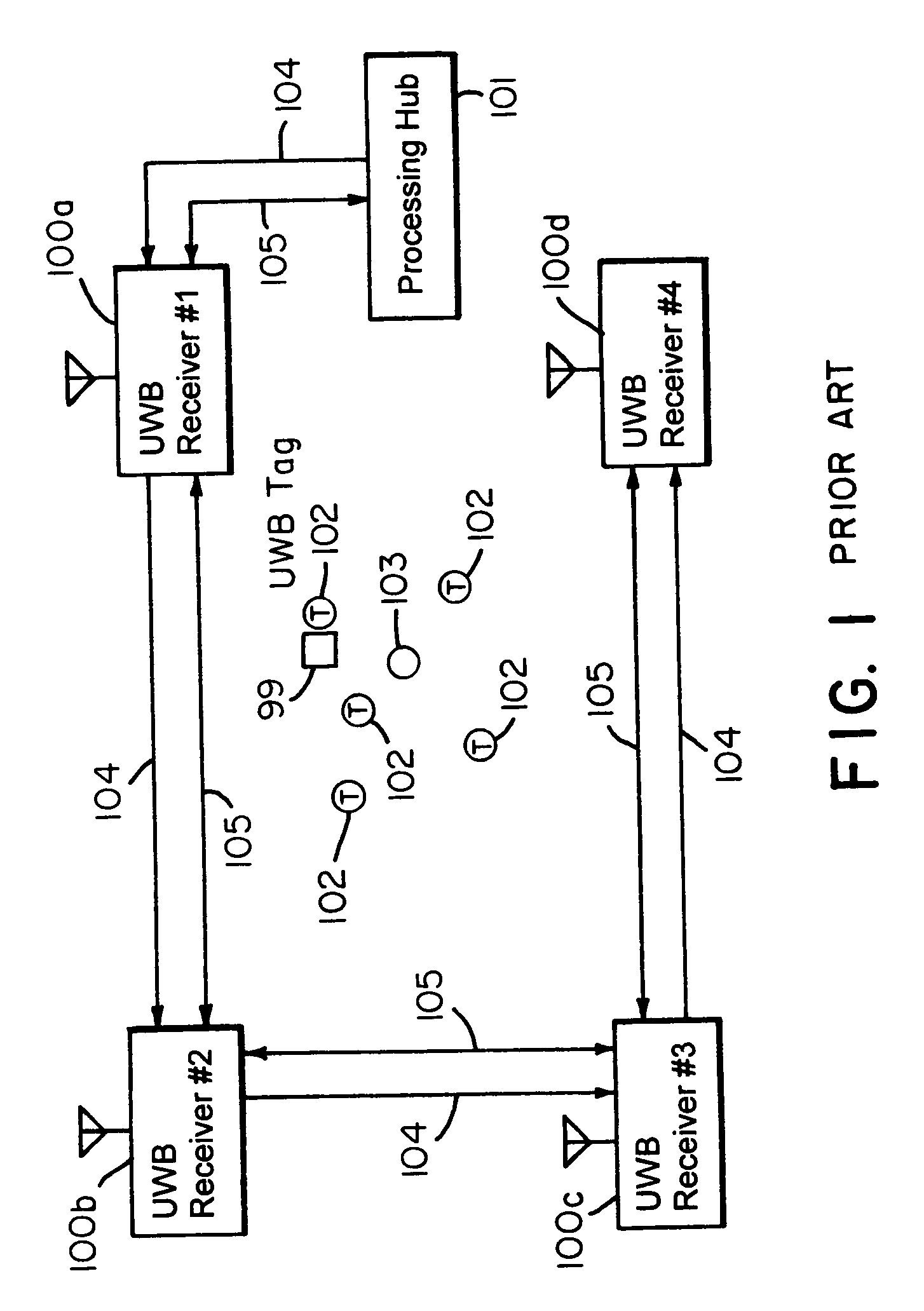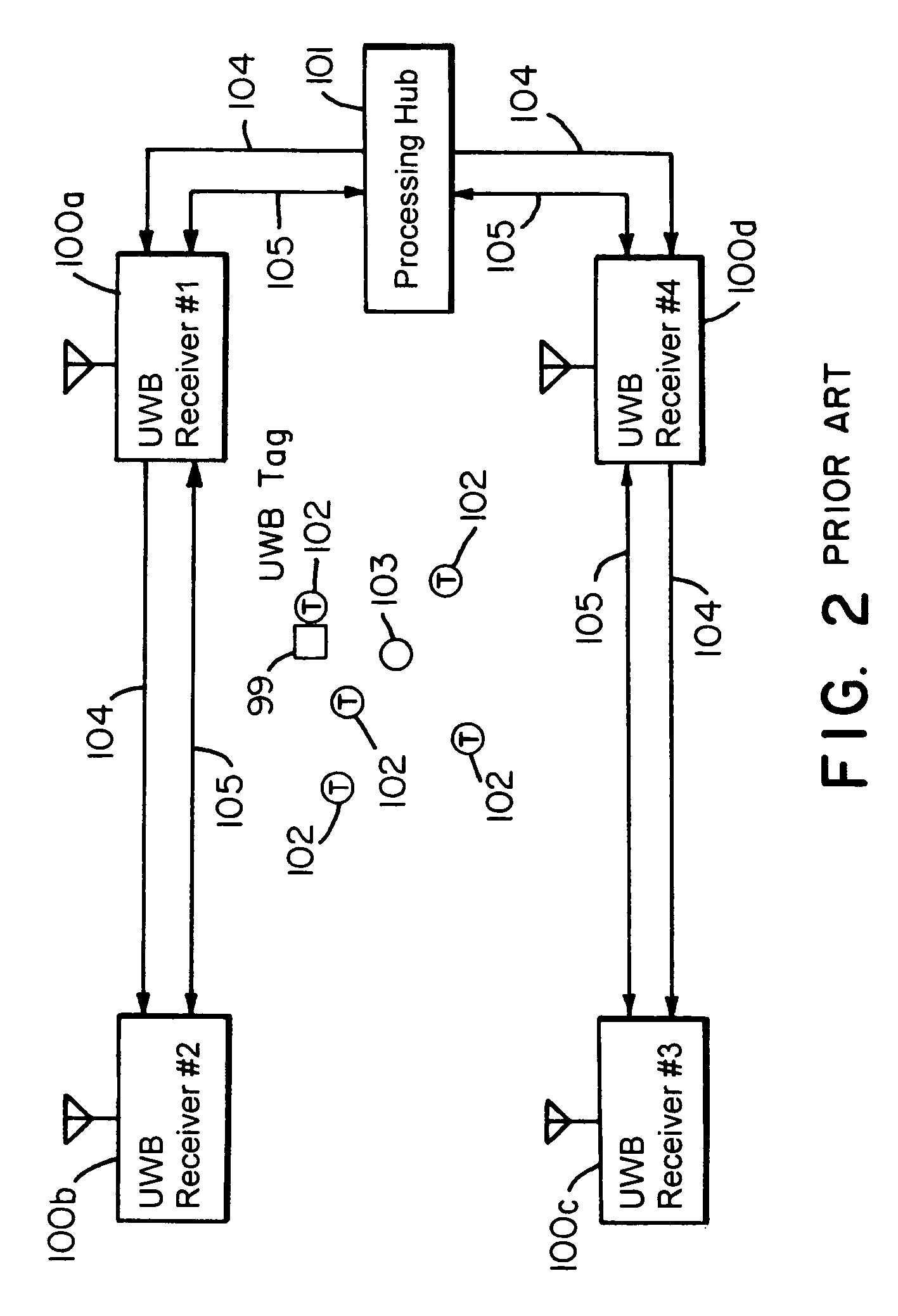Extensible object location system and method using multiple references
a technology of object location and reference, applied in the direction of direction finders, direction finders using radio waves, instruments, etc., can solve the problems of object location not being determined, clock frequency degraded position measurement accuracy, signal dispersion in the cable,
- Summary
- Abstract
- Description
- Claims
- Application Information
AI Technical Summary
Benefits of technology
Problems solved by technology
Method used
Image
Examples
example
Signal Blockage Problem
[0067]A limitation of a system using a single reference tag is possible blockage of direct transmission paths between the reference tag and one or more of the receivers. As noted above, a direct transmission path from the reference tag to the receivers must be established in order to generate a full matrix of all timing or counter offsets (ΔRij). However, due to the nature of an indoor environment, there may only be a limited number of such unobstructed, direct transmission paths. For example, walls, machinery, and other obstacles may create signal attenuation or even complete signal blockage from certain tag locations, negating the ability to use a single reference system or method. In FIG. 5, for example, reference tag 201 has direct line-of-sight paths only to three monitoring stations 141, 142, and 144 (i.e., UWB Receivers #1, 2 and 4) while the transmission path to station 143 (Receiver #3) is completely blocked by an RF barrier 300 thereby preventing a s...
PUM
 Login to View More
Login to View More Abstract
Description
Claims
Application Information
 Login to View More
Login to View More - R&D
- Intellectual Property
- Life Sciences
- Materials
- Tech Scout
- Unparalleled Data Quality
- Higher Quality Content
- 60% Fewer Hallucinations
Browse by: Latest US Patents, China's latest patents, Technical Efficacy Thesaurus, Application Domain, Technology Topic, Popular Technical Reports.
© 2025 PatSnap. All rights reserved.Legal|Privacy policy|Modern Slavery Act Transparency Statement|Sitemap|About US| Contact US: help@patsnap.com



